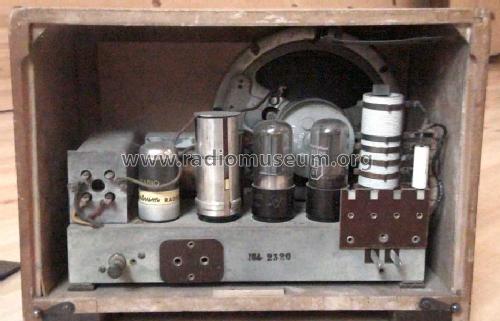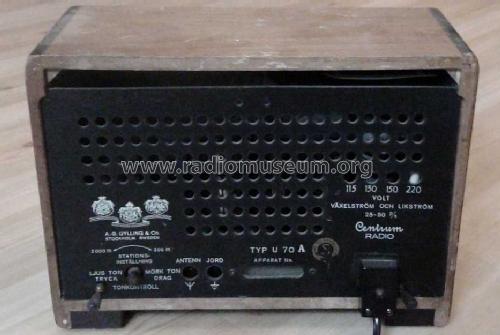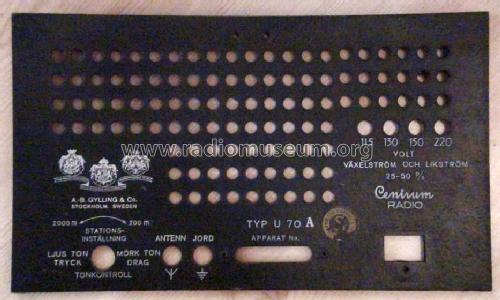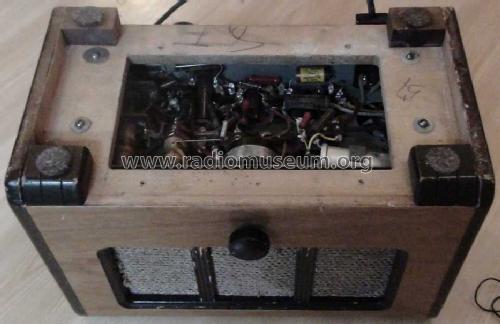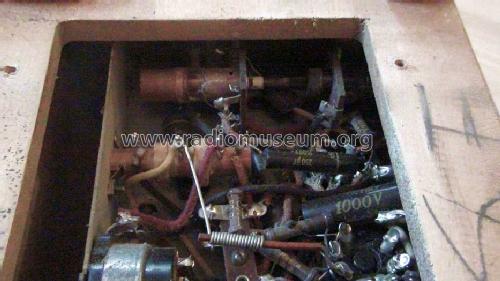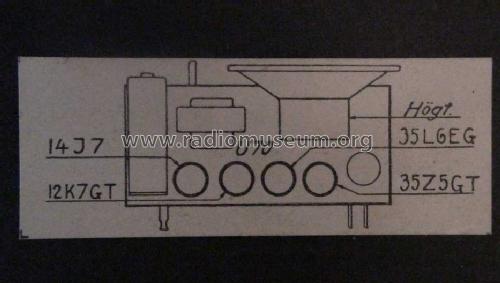- Pays
- Suède
- Fabricant / Marque
- Centrum-Radio, Gylling & Co.; Stockholm
- Année
- 1941 ?
- Catégorie
- Radio - ou tuner d'après la guerre 1939-45
- Radiomuseum.org ID
- 188816
-
- Brand: Gylling
- No. de tubes
- 4
- Principe général
- Super hétérodyne (en général); Appareillage spécial ? Renseignements souhaités SVP.
- Circuits accordés
- 3 Circuits MA (AM)
- Gammes d'ondes
- PO et GO en UNE SEULE bande (rare)
- Tension / type courant
- Appareil tous courants (CA / CC) / 115; 130; 150; 220 Volt
- Haut-parleur
- HP dynamique à aimant permanent + bobine mobile
- Matière
- Boitier en bois
- De Radiomuseum.org
- Modèle: U70A - Centrum-Radio, Gylling & Co.;
- Forme
- Modèle de table sans poussoirs, modèle cheminée
- Dimensions (LHP)
- 230 x 210 x 180 mm / 9.1 x 8.3 x 7.1 inch
- Remarques
- This is a compact, wooden radio that has no visible tuning knob or dial glass. With only a volume knob at the front it looks more like a small speaker.
A variable inductance tuning coil can be accessed from the back, stating a continuous tuning range from 200 to 2000m.
The same "tuning knob" can be pushed / pulled for audio tone control.
The continuous tuning range from 200 to 2000m seems ambitious. Perhaps a combination of manual RF and internal IF tuning could achieve this large span.
Lacking any service docs, I'm not sure about the exact operating principle. The chassis coils and tube lineup suggests this is not a 'standard' superhet with 2 IF stages. A 'typical' triode-diode valve like the 12Q7GT used in the Centrum U68 is not used here.
As other Swedish Centrum radio's at the time, many components were sourced from the USA. See the pictures for more details.
- Auteur
- Modèle crée par Robert Kooijman. Voir les propositions de modification pour les contributeurs supplémentaires.
- D'autres Modèles
-
Vous pourrez trouver sous ce lien 194 modèles d'appareils, 145 avec des images et 61 avec des schémas.
Tous les appareils de Centrum-Radio, Gylling & Co.; Stockholm

